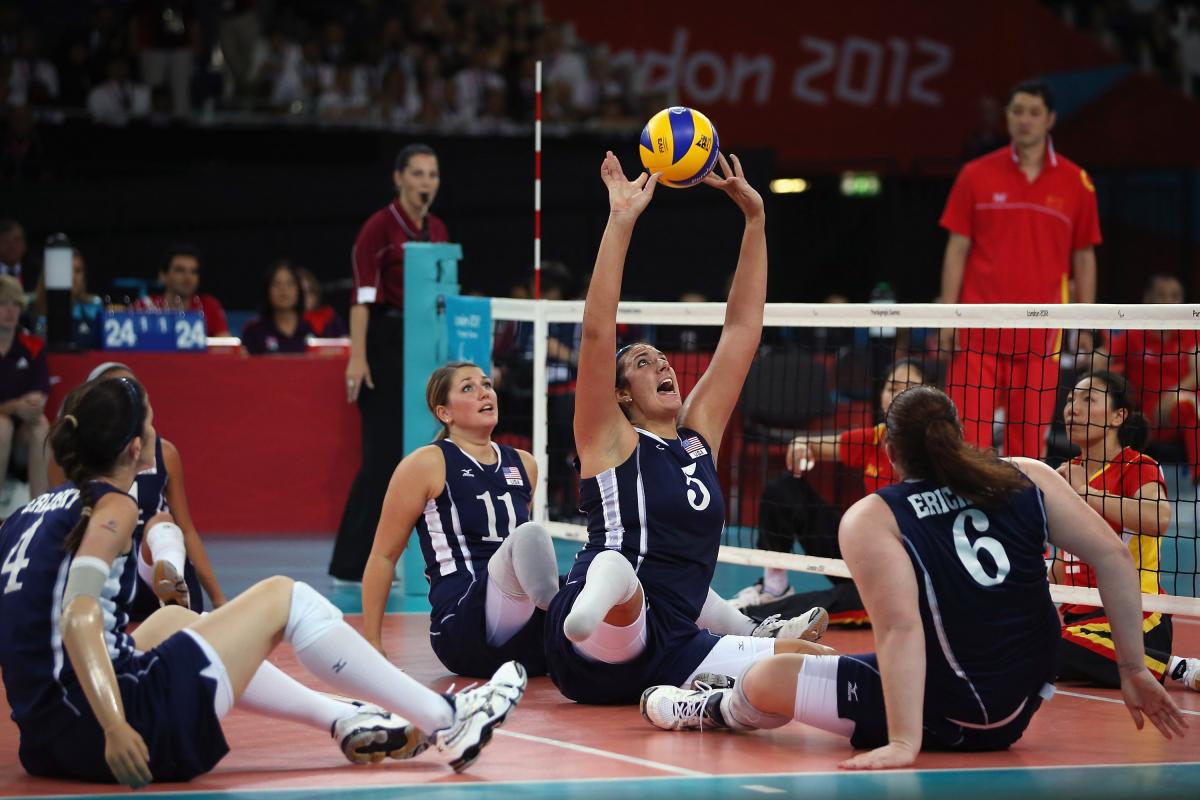How can USA beat China at Sitting Volleyball Worlds?
Following two silver-medal Paralympic performances, USA’s women’s sitting volleyball team is hungrier than ever to be world No. 1. 02 Jan 2014
Katie Holloway sets the ball for USA against China in the gold-medal game at the London 2012 Paralympic Games.
“I feel we have a strong offensive game and that’s what we capitalised on in the past. But as the competition gets stronger, we cannot solely rely on that. In order to beat (China), we have to be balanced and consistently good, which is what they are good at.”
Most countries would never consider rebuilding an athletic programme after a pair of silver-medal winning Paralympic tournaments.
However, for the USA’s women’s sitting volleyball team, the loss of key personnel and a change in playing style have them doing just that heading into the 2014 World Championships, which take place in June in Elblag, Poland.
USA set out to win gold at both the Beijing 2008 and London 2012 Paralympics but were defeated in the gold-medal game of both tournaments by China.
After London, several important players, including team captain Kendra Lancaster, decided to step away from the team, forcing USA to remodel their programme.
Now in the process of that rebuild, USA is out for redemption and hoping to create a dynasty of their own.
“We are evolving into a new team with young and experienced players learning to play together in a new system,” team captain Katie Holloway said.
Holloway, a veteran of USA’s last two Paralympics, has been impressed with the team’s post-London play and believes that their victory at last October’s Pan American Zonal Championships in Oklahoma, which earned them a spot at this June’s World Championships, was a major building block in the team’s development.
“We did a great job in adjusting to our new system and learning how to play next to each other again,” said Holloway. “Each day we did better and better.”
The team is adapting to several structural changes in their style of play, including a switch on offense from a 6-2 formation to a 5-1. The USA believe the changes add a new dimension to their game and will better serve them against sitting volleyball superpowers China, Russia, and Ukraine.
“I feel we have a strong offensive game and that’s what we capitalised on in the past,” Holloway said. “But as the competition gets stronger, we cannot solely rely on that. In order to beat (China), we have to be balanced and consistently good, which is what they are good at.”
The combination of young and veteran players is a new look for a USA programme that has relied on mostly experienced players in the past.
However, the new American players have all had the chance to practice at their official training site, which Holloway believes will be enough to combat their inexperience and unfamiliarity.
“We will have almost a full roster that, at one point or another, has been a resident athlete and received at least one full year of training,” said Holloway. “The programme has grown where we can train full time and get that experience at a faster rate.”
However, USA head coach Bill Hamiter feels the team still makes the mistakes that come with learning to play with new teammates.
“The team played well (at the Zonal Championships), but we still have a few tweaks in our system that we feel will make us better overall,” said Hamiter. “Being able to look at those and examine them in a competition like that is beneficial for us.”

 Facebook
Facebook
 Instagram
Instagram
 Twitter
Twitter
 Youtube
Youtube
 TikTok
TikTok
 Newsletter Subscribe
Newsletter Subscribe
